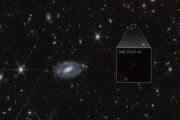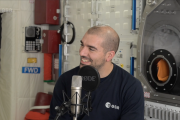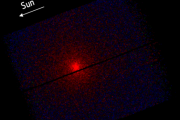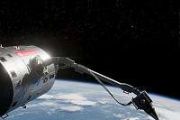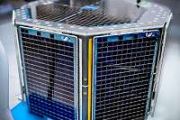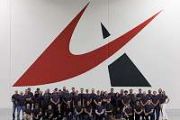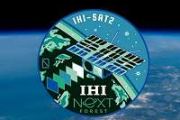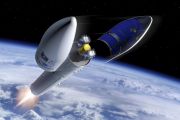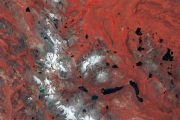
Copernical Team
Self-powered, printable smart sensors could mean cheaper, greener Internet of Things
 Creating smart sensors to embed in our everyday objects and environments for the Internet of Things (IoT) would vastly improve daily life-but requires trillions of such small devices. Simon Fraser University professor Vincenzo Pecunia believes that emerging alternative semiconductors that are printable, low-cost and eco-friendly could lead the way to a cheaper and more sustainable IoT.
Lea
Creating smart sensors to embed in our everyday objects and environments for the Internet of Things (IoT) would vastly improve daily life-but requires trillions of such small devices. Simon Fraser University professor Vincenzo Pecunia believes that emerging alternative semiconductors that are printable, low-cost and eco-friendly could lead the way to a cheaper and more sustainable IoT.
Lea New solar cell material could be used in space
 Research led by the University of Warwick will investigate a new type of solar cell material, which could be used in space, in a bid to reduce reliance on fossil fuels.
The European Research Council (ERC) has approved a five-year study which will delve into the atomic-level structure of a new type of solar cell material. This will address issues including stability and lifespan of metal ha
Research led by the University of Warwick will investigate a new type of solar cell material, which could be used in space, in a bid to reduce reliance on fossil fuels.
The European Research Council (ERC) has approved a five-year study which will delve into the atomic-level structure of a new type of solar cell material. This will address issues including stability and lifespan of metal ha Planet Scales Education and Research Program
 Planet Labs has announced a new, scaled structure for their Education and Research (E&R) Program, aiming to increase global accessibility to their satellite data and services. Starting today, the program offers a new packaging model with a tiered global pricing system and high-resolution SkySat data, a first for a university program in the satellite data industry.
Launched in 2017, Planet'
Planet Labs has announced a new, scaled structure for their Education and Research (E&R) Program, aiming to increase global accessibility to their satellite data and services. Starting today, the program offers a new packaging model with a tiered global pricing system and high-resolution SkySat data, a first for a university program in the satellite data industry.
Launched in 2017, Planet' Kleos KSF1 geospatial intelligence released to customers
 Kleos Space has confirms it is successfully processing RF data collected by the Vigilance Mission (KSF1) satellites through its signal processing technology platform to create its geospatial intelligence (GEOINT) product, LOCATE, which has been released to initial customers alongside other intelligence collected by the Vigilance Mission.
Kleos CEO Andy Bowyer said, "Our geospatial intellig
Kleos Space has confirms it is successfully processing RF data collected by the Vigilance Mission (KSF1) satellites through its signal processing technology platform to create its geospatial intelligence (GEOINT) product, LOCATE, which has been released to initial customers alongside other intelligence collected by the Vigilance Mission.
Kleos CEO Andy Bowyer said, "Our geospatial intellig Airbus to provide Poland with a very high resolution optical satellite system
 Airbus Defence and Space has signed a contract with Poland to provide a geospatial intelligence system including the development, manufacture, launch and delivery in orbit of two high-performance optical Earth observation satellites.
The contract also covers the associated ground segment, including Direct Receiving Station in Poland, launch services, training for the Polish team, maintenan
Airbus Defence and Space has signed a contract with Poland to provide a geospatial intelligence system including the development, manufacture, launch and delivery in orbit of two high-performance optical Earth observation satellites.
The contract also covers the associated ground segment, including Direct Receiving Station in Poland, launch services, training for the Polish team, maintenan Space contractors release China's launch plans for 2023
 China plans to carry out around 60 launch missions this year, according to the country's major space contractors.
China Aerospace Science and Technology Corp, the nation's leading space contractor, has more than 50 launch missions planned in 2023, said its annual work report.
The report, presented by Zhang Zhongyang, general manager of the State-owned conglomerate, at the company's a
China plans to carry out around 60 launch missions this year, according to the country's major space contractors.
China Aerospace Science and Technology Corp, the nation's leading space contractor, has more than 50 launch missions planned in 2023, said its annual work report.
The report, presented by Zhang Zhongyang, general manager of the State-owned conglomerate, at the company's a Keysight, Qualcomm accelerate 5G non-terrestrial network communication services for remote areas
 Keysight Technologies, Inc. (NYSE: KEYS), a leading technology company that delivers advanced design and validation solutions to help accelerate innovation to connect and secure the world, announced it has collaborated with Qualcomm Technologies, Inc. to establish an end-to-end 5G non-terrestrial network (NTN) connection. Based on this successful demonstration of call signaling and data transfer
Keysight Technologies, Inc. (NYSE: KEYS), a leading technology company that delivers advanced design and validation solutions to help accelerate innovation to connect and secure the world, announced it has collaborated with Qualcomm Technologies, Inc. to establish an end-to-end 5G non-terrestrial network (NTN) connection. Based on this successful demonstration of call signaling and data transfer Hubble finds that ghost light among galaxies stretches far back in time
 In giant clusters of hundreds or thousands of galaxies, innumerable stars wander among the galaxies like lost souls, emitting a ghostly haze of light. These stars are not gravitationally tied to any one galaxy in a cluster.
The nagging question for astronomers has been: how did the stars get so scattered throughout the cluster in the first place? Several competing theories include the poss
In giant clusters of hundreds or thousands of galaxies, innumerable stars wander among the galaxies like lost souls, emitting a ghostly haze of light. These stars are not gravitationally tied to any one galaxy in a cluster.
The nagging question for astronomers has been: how did the stars get so scattered throughout the cluster in the first place? Several competing theories include the poss Serpent in the sky captured with ESO telescope
 A myriad of stars is revealed behind the faint orange glow of the Sh2-54 nebula in this new infrared image. Located in the constellation Serpens, this stunning stellar nursery has been captured in all its intricate detail using the Visible and Infrared Survey Telescope for Astronomy (VISTA) based at ESO's Paranal Observatory in Chile.
When the ancients looked up at the night sky they saw r
A myriad of stars is revealed behind the faint orange glow of the Sh2-54 nebula in this new infrared image. Located in the constellation Serpens, this stunning stellar nursery has been captured in all its intricate detail using the Visible and Infrared Survey Telescope for Astronomy (VISTA) based at ESO's Paranal Observatory in Chile.
When the ancients looked up at the night sky they saw r Satellogic announces expansion of Aleph-1 constellation following Transporter-6 launch
 Satellogic Inc. reports the deployment of four satellites, launched with SpaceX at Cape Canaveral Space Force Station. Each of the spacecraft have made contact with Satellogic's ground station network and confirmed good health across all subsystems.
The SpaceX Transporter-6 mission was completed Tuesday with a two-stage rocket delivering these four satellites to a sun-synchronous low-Earth
Satellogic Inc. reports the deployment of four satellites, launched with SpaceX at Cape Canaveral Space Force Station. Each of the spacecraft have made contact with Satellogic's ground station network and confirmed good health across all subsystems.
The SpaceX Transporter-6 mission was completed Tuesday with a two-stage rocket delivering these four satellites to a sun-synchronous low-Earth 





